Dissertation Fellowships
Susan Blevins
Emory University
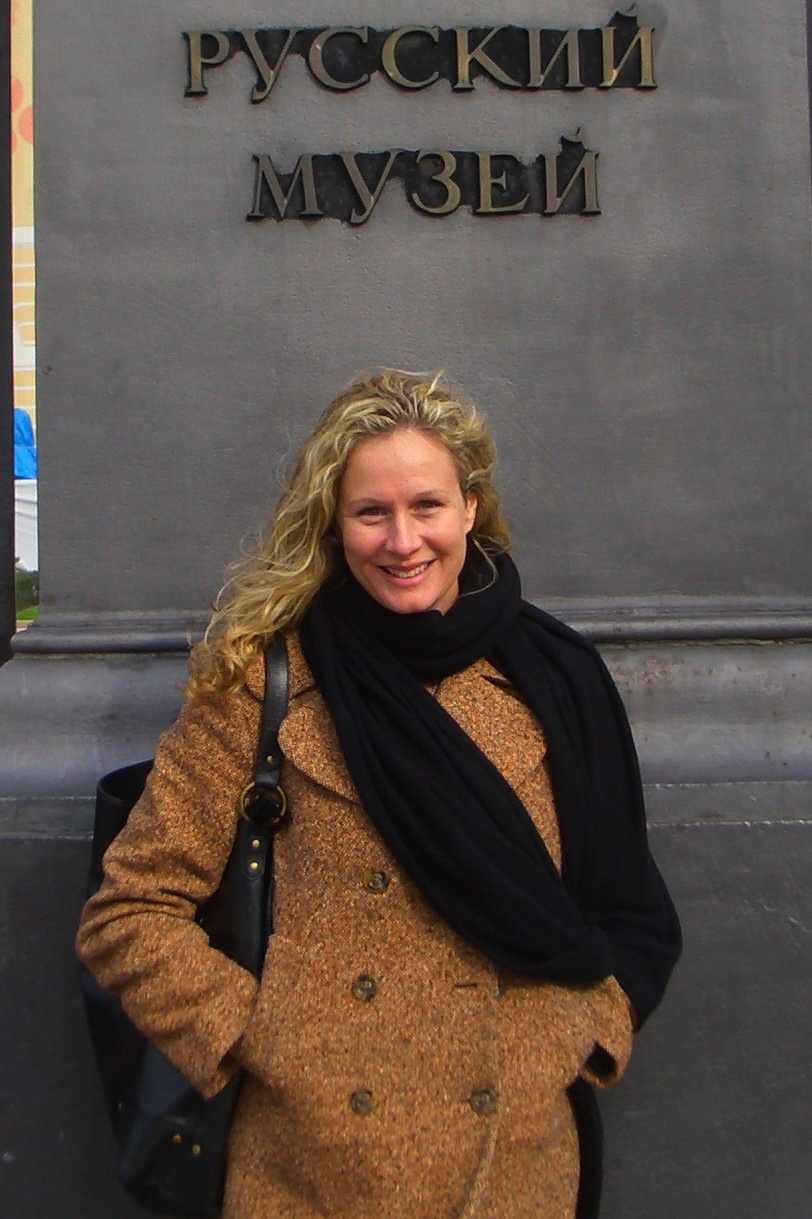
Temples of the divi imperatores: memory and identity
We know of eleven temples to individual deified emperors and their imperial family members, or divi, in Rome: the first to Divine Julius was dedicated in 29 BCE, and the latest, to Divine Marcus Aurelius, was built after 181 CE. How did architecture and ritual associated with cults of divi shape the Roman collective memory of individual emperors and the conception of the imperial office? What practices ensured and perpetuated imperial aeternitas? This study of the mnemohistory of deified emperors reveals that the temples to divi, and associated ritual, functioned individually and cumulatively as the primary loci for the construction of each divus as aeternus or timeless (or even outside of time). The memory of deified emperors became a touchstone of imperial Roman society that provided continuity despite recurrent dynastic ruptures in the transfer of imperial power. Moreover, this phenomenon lay at the very heart of Roman identity formation which sought a kind of divine legitimation through their deified rulers. I explore the tension between cultural revision and cultural continuity inherent in collective memory and suggest that the established dichotomy may require elaboration to accommodate imperial deification.
Lauren Donovan
Brown University
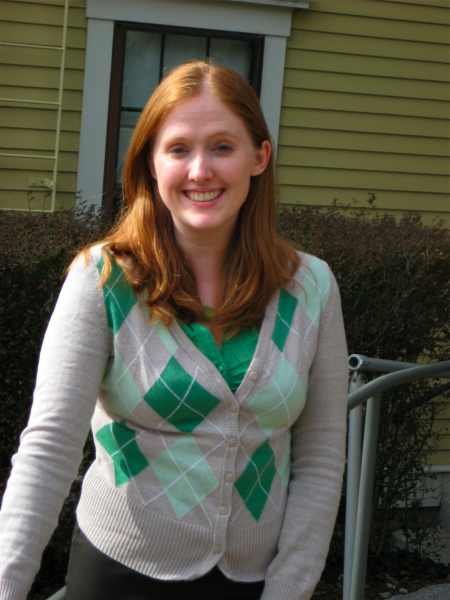
Literary and Ideological Memory in the Octavia
Scholars often note that the Octavia as a whole presents a post-Neronian audience with a specific memory of the dynastic purges of 62 CE and the historical figures involved in these events. Understudied, however, is the way in which the play's own characters constantly construct memories of the past-often in conflict with the memories of other characters-as well as try to control how they would in turn be remembered by posterity. My dissertation on the large scale examines the way in which memory is constructed, problematized, and even erased within this text. I am guided in this research by two fundamental questions. First, I explore what role the concept of memory plays in the Octavia and how it becomes a significant structural and thematic motif. My second interrelated question focuses on how the poet uses intertextual reminiscences of Julio-Claudian literature in order to shape not only literary memory, but also political, cultural, and ultimately ideological memory within his historical drama. The decision to put the Julio-Claudians back on stage was an act of staging memory that required the poet to construct a 'realistic' or believable memory of life under the previous regime. My dissertation aims at demonstrating that through this intertextuality the poet of the Octavia constructed a particular memory of Rome's first imperial family-a memory that had lasting influence on the way in which that family would be remembered.
Lucy Jones
University of London

Nostra Memoria: Social Memory in Republican Rome
In this thesis, I employ the discipline of social memory to re-evaluate the decline and fall narratives of Roman society in the first century BCE within their social context. In so doing, I attempt to identify what, if any, were the ethics of social memory and how these in turn affected the historical consciousness of the Republic.
Within the discipline of Classics, the relationship between social memory and history is an area of renewed and growing interest. To the best of my knowledge, a detailed analysis of the relationship between the perceived decline and fall of Roman society and the study of social memory is exiguous, although the discipline is moving increasingly towards an understanding of the Krisenbewußtsein of Roman historical consciousness. The notion of Krisenbewußtsein in republican Rome is integral to the argument of my thesis, in that I take it to have been a response, not to 'actual' historical crises of the first century BCE, but to deep-seated social anxieties about the past and an ingrained sense of nostalgia. These concerns, although present in many societies, were reinforced in Rome by familial and societal veneration of the maiores. This framework conditioned the social memory of the past as well as the historical consciousness of the present and affected the narratives that were told both contemporaneously and subsequently about the history of Rome.
I test this theory by analysing in detail various aspects of the written evidence from the Republic, often using interdisciplinary approaches from, for example, anthropology and sociopsychology, to elucidate my discussions.
Sebastian Modrow
Universität Greifswald

Vom punischen zum römischen Karthago. Reflexionen eines Konflikts und ihr Beitrag zur Konstruktion römischer Identität
Gegenstand meiner Doktorarbeit soll die Transformation einer realen Landschaft, der punischen Welt mit ihrem Mittelpunkt Karthago, in einen medialen cue des kollektiven Gedächtnisses der Römer sein. Der gewählte Titel beinhaltet somit einerseits den zeitlichen Rahmen der Betrachtung (von der Zeit der ersten Reflexionen (ca. 2. Punischer Krieg) bis zur Neugründung der Stadt im Jahre 29 v. Chr.), als auch andererseits die zentrale Frage: Wie konnte Karthago für die Römer zu einem solchen Abrufreiz verinnerlichter Sichtweisen werden und was beinhaltete er? Die Frage nach Entwicklung und Inhalt des Karthagerbildes ist jedoch unweigerlich mit der Frage nach seiner Funktion verbunden. Die Rekonstruktion von Vergangenheit dient einem gegenwärtigen Zweck. Zudem muss der Einfluss oder die bewusste Absetzung von bereits vorgefundenen Deutungen berücksichtigt werden sowie die speziellen Formen römischer Memoria. Die Begegnung der Römer mit dem punischen Kulturkreis war zweifellos eine der folgenreichsten in der römischen Geschichte und ihr letztendliches Resultat war die physische Vernichtung der Stadt Karthago im Jahre 146 v. Chr. Die Errichtung des zweiten Karthago unter Kaiser Augustus war die einer römischen Kolonie und keinesfalls die Wiedererrichtung der alten punischen Metropole. Die Neugründung der Stadt als Colonia Julia Concordia Carthago war zweifellos eine ideologische Herausforderung des kulturellen Gedächtnisses der Römer, die ihre Spuren in den historischen Reflexionen ihrer Zeit (hier besonders in Vergils Aeneis) hinterließ. Karthago war im kulturellen Gedächtnisses der Römer zu einer bedeutenden Größe geworden. Seine Wiedererrichtung war somit nicht nur ein städtebaulicher, ökonomisch-politischer Eingriff in die Landschaft Nordafrikas, sondern gleichzeitig einer in die römische Erinnerungslandschaft, eine Herausforderung der römischen Identität.
Shreyaa Patel
University of London
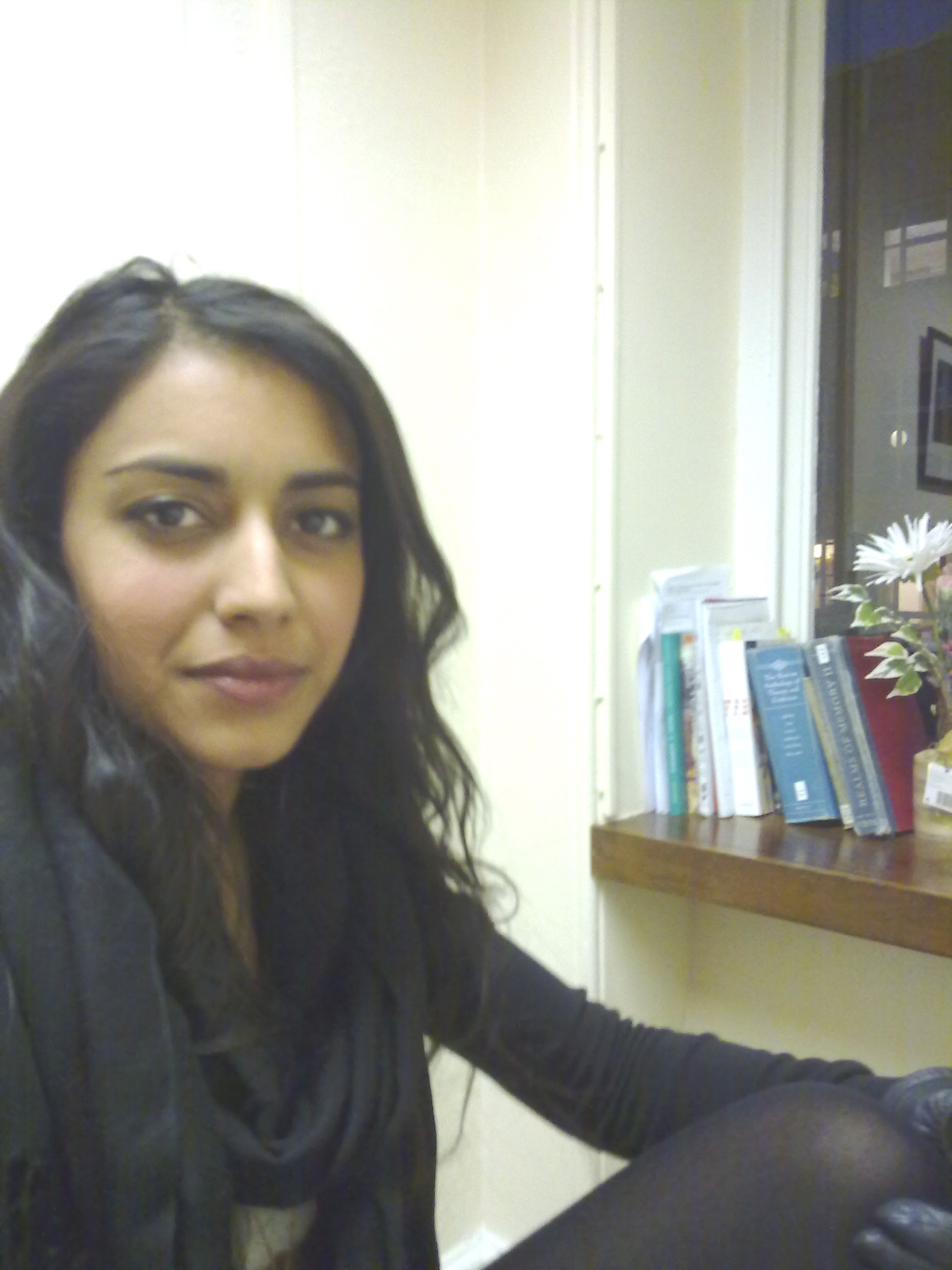
Aspects of Tacitean memory
My research will aim to question the existence of a possible 'ethics of Tacitean memory' and how such ethics could potentially better our understanding of the Tacitean oeuvre and its place within Roman history. Through reading Tacitus' writings as symptomatic of his world-view, I aim to explore whether Tacitus' historical narratives disclose a hostility towards remembering; whether he had an obligation to remember, forget (or invent) certain events or people; whether his memories of certain heroic exempla depoliticise their familiar uses and whether this can be taken as reflective of a shift in the memory of his wider Symbolic community (i.e. a possible Flavian memory?). Such a focus will enable me to examine whether the established technologies of remembering the Republican past were psychological forms of societal surveillance: was the ethic of remembering the Republican past as a repository of true virtus a form of regulating the individual? If so, a change in the memory-work shows not only the dis-acceptance of the established ethics of remembering but it furthermore becomes a counter-argument to the current political system which aimed to foster such technologies of memory. This then suggests the existence of a developing 'counter-memory' - and it perhaps illuminates established conceptions of Tacitus' references to the loss of libertas under Domitian: if the technique of remembering the past was an imposition, designed to maintain the individual within the requirements of a civilised society, can it be argued that the loss of libertas was therefore a psychological impediment on the individual subject, as well as a political hindrance? Either way, it is my view that like libertas, memory too becomes a contested ideal in the Tacitean oeuvre, yet it remains a positive site through which one can explore the remnants of a fluctuating socio-politics - a rupture in the established ethics of Roman memory.
Maggie Popkin
Institute of Fine Arts, New York University
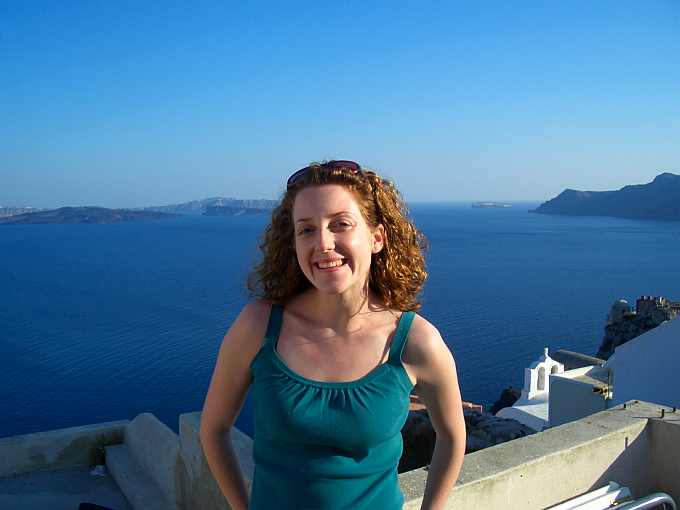
The Triumphal Route in Republican and Imperial Rome: Architecture, Experience, and Roman Identities
The Roman triumph, an elaborate victory ritual, wound its way through the streets of Rome from the early republican through the imperial periods. The triumph was a quintessentially Roman institution, embodying fundamental aspects of Rome's self-image: military might and "world" dominance. It was intertwined with monuments, urban space, individual and collective memory, and Roman identities, but these levels of meaning have not yet been fully explored. I propose a critical study of the triumph's architectural space that examines the complex relation between Romans' memories and conceptions of the ritual and their interactions with its associated monuments. Focusing on three key periods in Rome's history rich in evidence - the second century B.C.; Trajan's reign; and the Severan era - I argue that the monuments lining the route shaped Romans' experiences and memories of triumphs as well as their formulations of what it meant to "be Roman" in relation to the broader Mediterranean world.
Emmanuelle Raymond
Université de Lyon
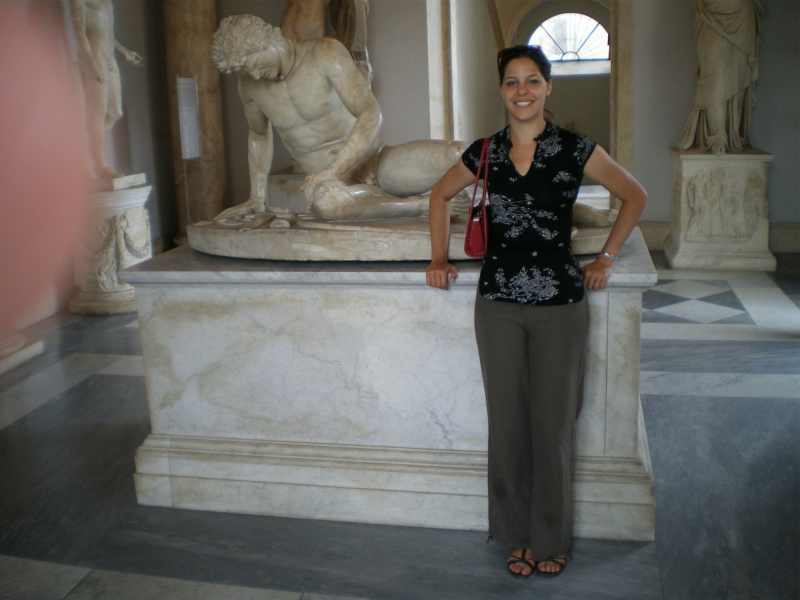
Musa, mihi causas memora... Recherche sur les formes et aspects de la mémoire dans l'Enéide de Virgile
Le projet consiste à montrer en quoi la notion de mémoire peut s'avérer un enjeu majeur dans la composition de l'œuvre. L'épopée virgilienne attire l'attention du lecteur sur l'omniprésence d'une mémoire représentée et clairement identifiable à travers des objets, des lieux ou des personnages de la fiction. Le poète suscite une réflexion sur cette mémoire intradiégétique qu'il présente comme un facteur de cohésion unissant les hommes et les époques dans un principe de transmissibilité de la Mémoire. Virgile propose aussi une réflexion métapoétique plus profonde sur son art même : le poète déborde le cadre strict de la fiction qu'il utilise pour donner libre cours à l'expression d'une mémoire extradiégétique où la narration laisse place au hic et nunc de l'écrivain et de ses contemporains. Certains passages de l'Enéide, propices à une lecture métapoétique, suggèrent l'idée que Virgile a disséminé dans son œuvre quelques éléments d'un art poétique fondé sur une utilisation de la Mémoire. Il reprend la figure traditionnelle du uates en l'infléchissant en faveur d'une vision du poète garant de la mémoire et définit l'Enéide comme œuvre de mémoire dont la composition même doit largement à cette forme littéraire du souvenir qu'est l'intertextualité. Mais le rapport qu'entretient Virgile à l'épopée gréco-romaine est à l'origine d'un questionnement plus profond qui tend à montrer l'utilisation que le poète latin fait du matériau homérique pour le mettre au service de sa propre création poétique, incarnant ainsi le principe littéraire de l'alter ab illo. Grâce à ces multiples éléments, il est possible de mettre à jour la construction progressive d'une définition de la mémoire épique et plus précisément de la mémoire épique virgilienne qui pose l'affirmation d'un genus Latinum et se trouve au centre des choix d'écriture qui distinguent Virgile face à ses épigones.
Stefano Rebeggiani
Università degli Studi di Roma "La Sapienza"

Sic itur ad astra: memoria culturale e attualità politica nella Tebaide di Stazio
Il recente sviluppo degli studi sulla memoria culturale ha fornito un contesto teorico estremamente fecondo per l'interpretazione del rapporto tra la memoria collettiva (nelle sue varie forme di oggettivazione) e le forme del potere politico. Intendo studiare le modalità con cui Stazio incorpora nel suo poema maggiore, la Tebaide, elementi della memoria collettiva romana (oggettivata in una pluralità di testi, luoghi e monumenti), e ne fornisce una particolare elaborazione destinata alla costruzione di un discorso politico. Cercherò di dimostrare come Stazio si inserisca con contenuti originali nel dibattito politico di età flavia, e come il suo poema non rifletta passivamente il discorso ideologico dei suoi tempi, ma contribuisca personalmente ad esso, presentando al principe una riflessione sul potere ed un modello da seguire. É mia intenzione coinvolgere in questa analisi vari ambiti della memoria culturale: la memoria di luoghi e monumenti centrali nell'immaginario romano, così come la memoria di eventi storici e di testi letterari entrati a far parte, nell'epoca di Stazio, di un canone riconosciuto come fondante in senso identitario per lo stato romano.
Aaron Seider
University of Chicago

Creating the Past: Memory in Vergil's Aeneid
My research analyzes the role that memory plays in the Aeneid by combining recent critical work on social memory with close reading and a narratological approach. Memory's crucial importance to Vergil's epic is no accident. The Aeneid explores the transition between past and future and, above all, the question of how individuals and groups negotiate that transition. Its characters consistently interact with their memories of Troy's destruction and think about their own commemoration, just as the narrator, too, explores his own relationship with memory as one who both remembers and commemorates Rome's origins. Yet despite the signal importance of memory to the epic, its function in the Aeneid is often misunderstood. Contrary to interpretations that overlook memory's nuance and fluidity in favor of the therapeutic healing that forgetting supposedly offers, my research proposes that Aeneas and the Trojans mark and create meaning through remembering and commemorating the past. Even though these interactions often evoke suffering and loss, they are a key way for Aeneas to move forward in an unknown world. A similar dynamic exists in the narrator's relationship with his audience. He transforms his song into a social memory for his audience to share, certain aspects of which he acknowledges may leave him and his audience bewildered and frustrated. By focusing upon the characters' and narrator's engagement with memory, my research explores memory's function in the epic as well as the Aeneid's role within the larger cultural dialogue about memory and the past in Augustan Rome.
Research Grants
Anna Anguissola
Scuola Normale Superiore di Pisa
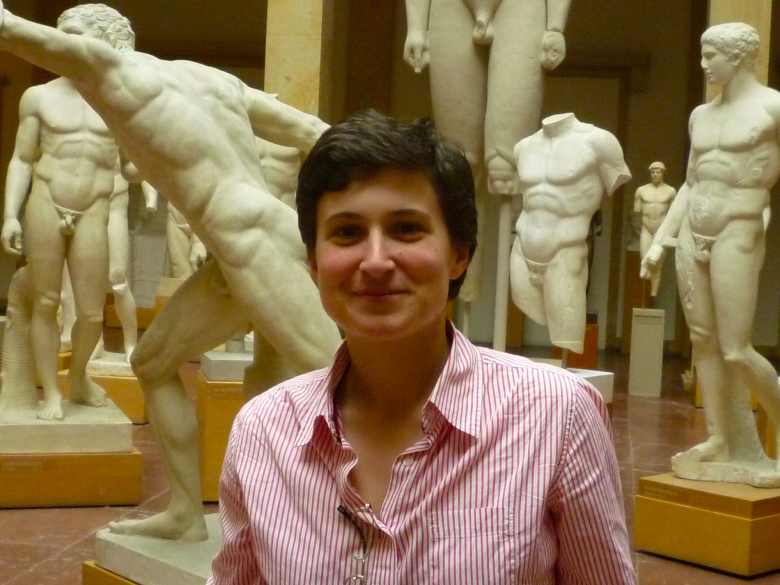
Masterpieces to remember: imitation and the strategies of memory in Roman art
Within Roman visual culture, the memory of Greek sculptural styles provided a useful tool for expressing a nuanced variety of concepts, tightly organized in a semantic code of 'new' values and qualities. Displaying the copy of an ancient masterpiece implied several stages of recollection, each of which could apply to different viewers, providing them with a comparable variety of ideas. When it comes to the reuse of figural traditions, not only are we asked to distinguish between intention and cliché, but we should also take into consideration the multitude of layers through which memory constructed meanings (linking places, persons and contexts from different times and geographical areas). References to 'ancient' Greek masterpieces (chronologically distant) were layered over hints to Roman 'modern' artefacts or places (far closer to the ultimate recipient) that had already exploited that tradition and had then turned themselves into prototypes to be retained and imitated. These are issues and questions that I wish to address through a set of extremely popular case-studies (the Diskobolos, the Doryphoros and the Diadoumenos, the Tyrant-Slayers, the Hercules Farnese, the group of Hermaphroditos Struggling with a Satyr), each addressing a particular 'replica series' and its contexts. Memory, here, provides a highly flexible key for understanding some of the dynamics that lie at the core of the interest towards artefacts of the past and their appropriation through copying.
Sinclair Bell
Northern Illinois University
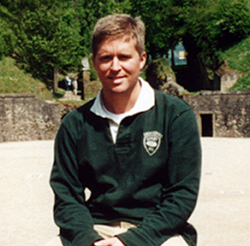
The Art of the Race: Circus Spectacles and Memory in Roman Culture
As arguably the oldest and most prominent of Rome's Erinnerungsorte, the Circus Maximus (and the Vallis Murcia that girdled it) served as a stage not only for the display of races but also ( through the performance of certain festivals) for the reenactment of the city's deep past. While the site's formative role and continued centrality to Rome's institutional memory has been well-documented, especially through study of the literary sources, its importance to individual Romans has gone largely overlooked. By contrast, the evidence of material culture can offer us individual, often poignant, testimonies to how spectacles reached beyond the confines of the arenas themselves and penetrated deep into the consciousness of everyday Romans. In mapping the circus's display and re-display in Roman visual and material culture, this project will demonstrate how the venue and its games were constantly reactivated with new meanings and memory for a contemporary audience.
Nicola Denzey
Brown University
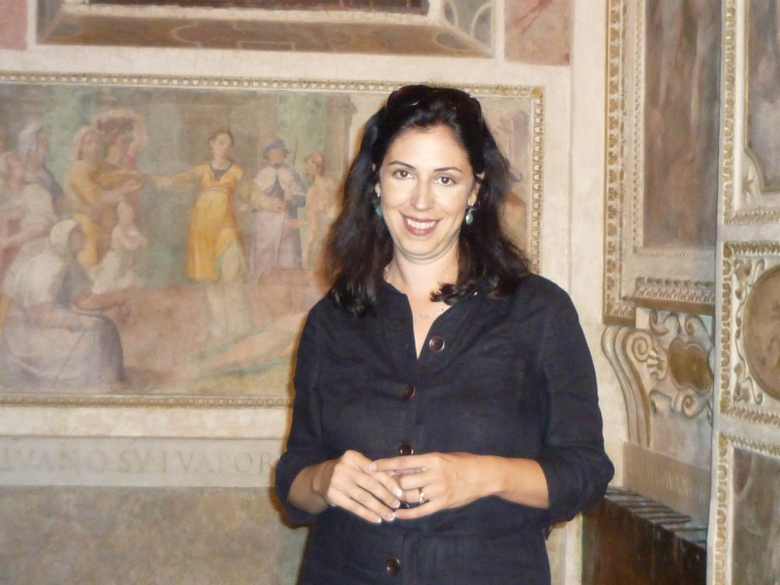
Cultural memory in non-Christian funerary art in late antiquity
Constantine's accession to the imperial seat and his subsequent "conversion" - whether authentic or self-serving - initiated a range of social responses from Roman elite, one measurable in a series of public documents and monuments. My own work investigates the impact of Christianization, particularly as it instigates a set of responses from recalcitrant pagans. My working premise is that a palpable link exists between the political and cultural reality that was the end of Empire and the choice of subjects in privately commissioned non-Christian funerary art. The art of Rome's last pagans, I argue, reflects both a nostalgia for things changing and lost and a new responsibility to preserve a collective cultural memory of their Greek and Roman past. The construction and role of collective memory, in fact - its evocation, manipulation, power to preserve and persuade - can and should be a key "frame" for reading late funerary Roman monuments. I am particularly interested in the interplay between image, narrative, and created space and the manner in which wealthy patrons commissioned physical space that explored and exploited Greek myth. What does myth evoke, or was it meant to evoke, in the late Roman context?
Virginia Fabrizi
University of Udine
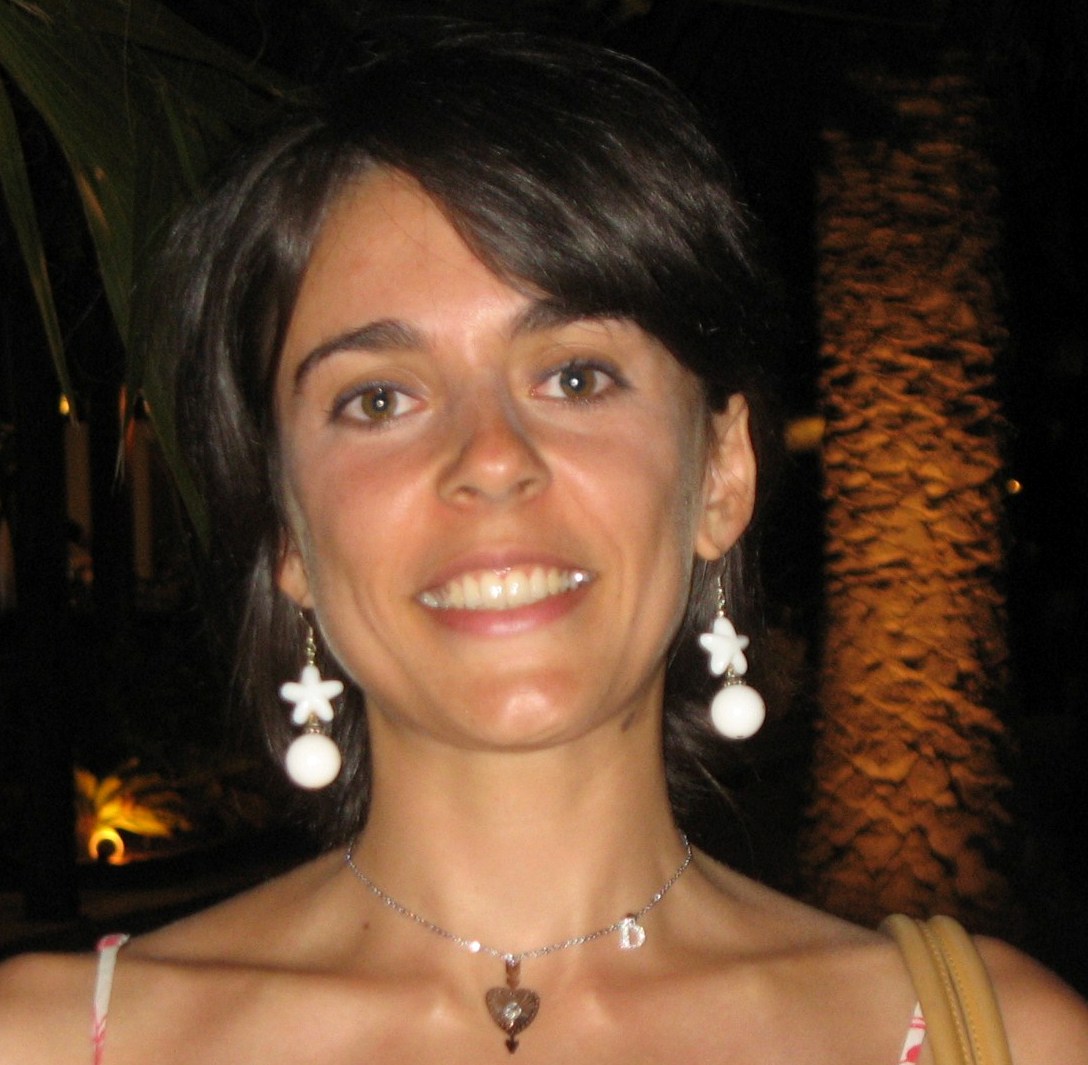
Construction and interpretation of historical memory in Ennius' Annals
My research analyzes the construction of a historical, political and literary memory of Rome in Ennius' Annals. I'm considering the poem as an attempt at proposing new ways of interpreting the Roman past and present, and above all of perceiving Roman identity, in a time, such as the period of Rome's great Mediterranean expansion, in which the Romans' self-consciousness underwent radical changes. The assessment of the ways in which the poet dealt with the historical events he narrated, re-elaborating or, sometimes, rewriting them, constitutes an important part of my research. I aim at showing how the poet's relationship with his historical material was deeply connected to the need to adapt the memory of the city to her new reality of leading Mediterranean power, in order to make it the basis of a new Roman identity. Under this respect I'd like to show, on one side, how the imperial destiny of Rome was projected backwards onto the remote past, which thus acquired the faculty of influencing and explaining the present, acting as its mirror and model; on the other side, how the recent past and the present were deeply transformed, too, by being turned into the subject matter of Homeric-styled epic, and how the conventions of epic themselves became a founding element of a new memory, that was at the same time historical and poetic. The consciousness of the new identity of the city thus passed through the perception not only of her centrality in the Mediterranean world, but also of her status as privileged subject of epic song. But how could the new memory proposed in the Annals affect the way the Romans perceived their own memory and identity? In order to answer this crucial question, I find it also necessary to devote considerable attention to the processes of transmission and reception of Ennius' work. In particular, I'm going to focus on the dynamics of poetic memory characterizing the relationships between the Annals and later Latin literary tradition. I argue, among other things, that such mechanisms of intertextuality (in which an important role is played by elements linked to the vocabulary and imagery of memory) are not simply aspects of literary practice, but sometimes imply attempts at rewriting Roman historical, cultural and political memory and can be read as paralleling the shifts in the perception of Roman identity through the different historical and political contexts.
Bilge Hürmüzlü
Süleyman Demirel University
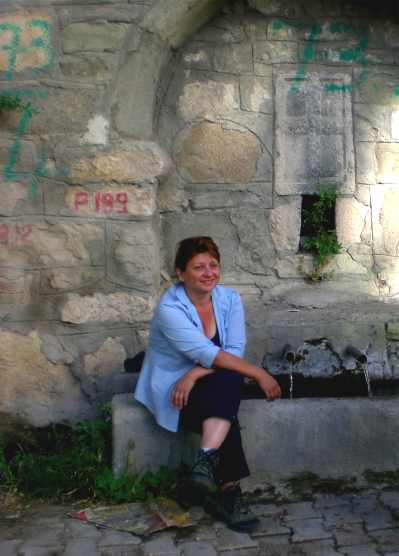
'Pisidian Phrygia': Memory and Social Recognition of Northwest Pisidia in Roman Period
Artistic and architectural motifs and elements belonging to earlier societies and beliefs frequently reappeared in the Roman Period. Many such examples are found in Pisidian Phrygia, suggesting that a collective or cultural memory was at work even centuries after the original presence. Were these only decorative elements? Or are they evidences of "the power of the collective memory"? What, exactly, were the burial customs before and during the Roman Period in the region? What were the innovations and what do they mean in terms of the (dis)continuity of cultural memory? Certainly funerals were and are t direct reflections of a society's belief in the afterlife. Collective memory also plays an important role in the presentation of grief and mourning. Burial types, goods, and modalities of display, which are often the symbolic keys to unlocking commemoration of status and prestige, will be studied in this project. Since these illustrate a nexus of social concerns from grief for the deceased to the celebration his or her power before a particular audience, they present an important reflection of the social memory. My focus is on how this process worked in the northwest part of Pisidia especially in regard to the rituals, which are an intrinsic part of cultural memory, during the Roman Period.
Zena Kamash
University of Oxford
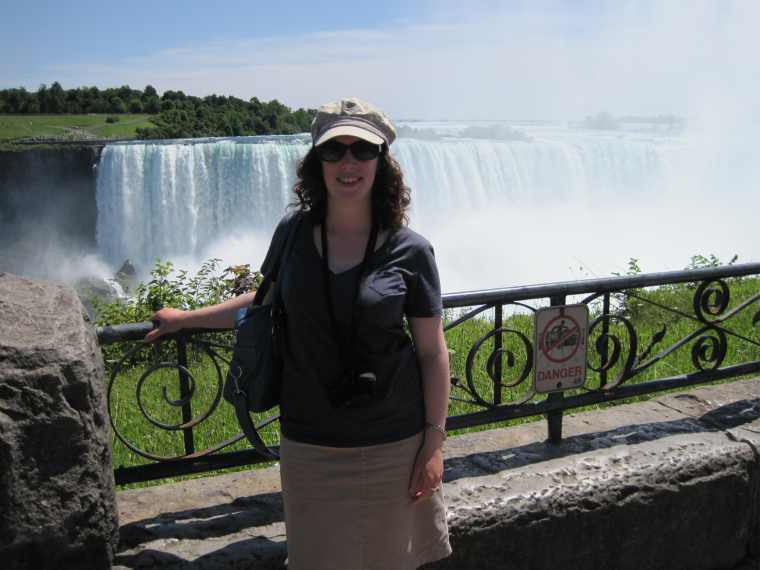
Memory, materiality and religion in Roman Britain
This project aims to explore how material manifestations of religion and religious activity in Roman Britain used and manipulated memories to create present identities and project hopes into the future. By bringing the role of materiality in memory to the fore, this project will build on the potential of material studies of memory to enrich our understandings of the ancient world as illustrated by eg Tatum and Alcock. This project will gather together information on architecture, finds and sites in a comparative framework, looking in detail at the best investigated temple sites in Britain and making briefer comparisons with other known temples. In addition, a selection of artefact assemblages from other locales, such as significant natural places (eg rivers) and domestic spaces, will be explored. Specific questions to be asked include: did these religious places become recognised as Nora's lieux de mémoire and if so, how? Did the physical environment and performance of specific activities work together or separately to create memories? How did the formalisation of religious architecture in the Roman period, and in particular the sensory impact this must have had, effect memory audiences? When sites were reused or built over, did this represent processes of remembering or of forgetting? Was visibility, necessarily, an indispensable component for remembering for all audiences in the Roman world? Finally, and central to all these questions, who were these memory audiences and how did their different identities affect their remembrances? It is hoped that through a focus on materiality and religion in Roman Britain this research project will engender novel insights into memory's role in the creation of pasts, presents and futures in a dynamic period and place in Rome's history.
Pietro Li Causi
Università di Palermo
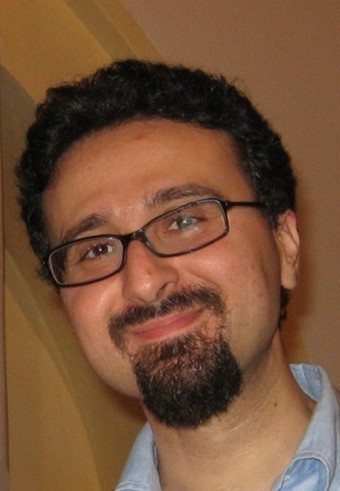
Memoria nel De Beneficiis di Seneca
Il mio progetto di ricerca verte sull'uso e sulle strategie della memoria all'interno del De beneficiis di Seneca. Più in particolare sono tre gli ambiti che mi interessa esplorare: 1) le dinamiche dell'oblio e della memoria all'interno del protocollo senecano della gratitudine; 2) le dinamiche della costruzione delle identità all'interno dell'interazione rituale del bene facere; 3) la monumentalizzazione di determinati personaggi che, nelle sezioni narrative del trattato, incarnano e personificano le argomentazioni teoriche senecane.
Eric Orlin
University of Puget Sound

Creation of cultural identities in Augustan Italy
I am interested in exploring how the reshaping of cities and their institutions throughout Italy during the Augustan period allowed for the construction of a Roman community and collective identity that incorporated both Italians and Romans. Many cities all over Italy saw dramatic rebuilding under Augustus, ranging from practical elements such as walls, gates, and aqueducts to theaters, amphitheatres, and religioussanctuaries. My project focuses on the site of Hispellum (Spello) in Umbria, both because the massive walls and other projects initiated during this period presented a new visual landscape and because Augustus involved the city with religious practices at the nearby Lacus Clitumnus and at FanumVoltumnae across the foothills in Etruria. By examining how the physical monuments and religious rituals created new associations and new memories, I hope to illuminate an important mechanism that contributed to the emergence of a new sense of Roman community.
Barbette Stanley Spaeth
College of William and Mary

Utilization of memory in Roman Corinth
In 146 B.C.E. the Roman general Lucius Mummius sacked Corinth as an example of what happened to those who resisted Roman rule. After this destruction, the city was largely abandoned for the next century, until Caesar sent out a colony to reoccupy the site in 44 B.C.E. An important question for scholars has been the extent to which Roman Corinth deliberately retained ties with its Greek predecessor. Did the Roman colonists and their descendents attempt to revive or to suppress the memory of the ancient Greek city and to what end? One area that has proven pivotal in examining the relationship between Greek and Roman Corinth is religion. Recent scholarship generally has taken the position that the leaders of Roman Corinth continued, or more properly revived, the important state cults of the Greek city in an attempt to add the luster of antiquity to their new city. The main evidence adduced to support this position is that the major divinities of the Greek period in Corinth continued to be worshipped in the Roman era, and several major cult sites of the Greek period were rededicated to the same divinities in the Roman era, including the Temple of Apollo off the Forum, the Sanctuary of Asklepios along the northern city wall, the Temple of Aphrodite on top of Acrocorinth and the Sanctuary of Demeter and Kore on its slopes. The problem with this interpretation of the evidence, I argue, is that it ignores significant differences between Greek gods and Roman ones and between the Greek and Roman cults devoted to these divinities. My project is examine the evidence for the four major cult sites in Corinth that were reused by the Romans and attempt to answer these questions: Were the divinities worshipped at these sites and the cults practiced there Greek or Roman? If the evidence shows that they were in fact Roman, then why did the leaders of Roman Corinth choose to reuse the Greek cultic sites for them? I hypothesize that by choosing these sites the leaders of the city invoked the memory of the earlier Greek cults, but by replacing these cults with Roman ones, they were co-opting that memory in an assertion of Roman power and dominance.
Karen Stern
Brooklyn College, CUNY
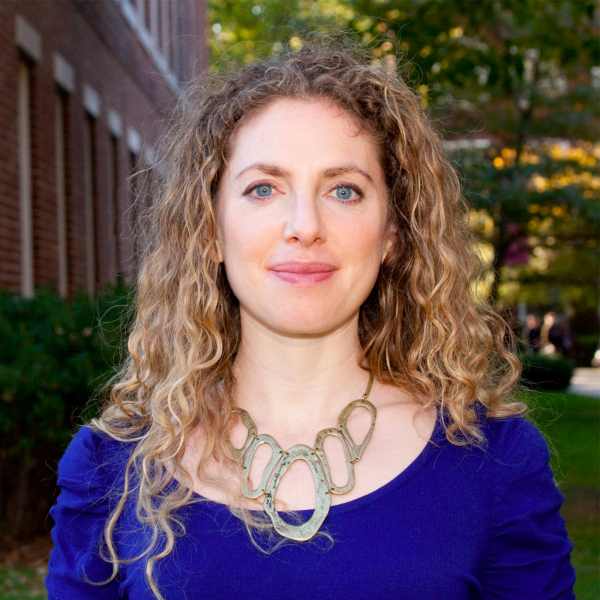
History, Memory, and Graffiti in Jewish Mortuary Contexts
in Rome
Hundreds of epitaphs discovered in catacombs attest populations of Jews who once inhabited the city of Rome and buried their dead outside its walls. Hebrew scripts, menorah symbols and inscriptions of Ioudaios on epitaphs have drawn scholarly attention and have inspired study of Jewish populations, who buried in the Randanini, Monteverde and Torlonia catacombs in late antiquity. Closer inspection of these burial complexes reveals that ancient visitors had also marked their hallways and burial spaces with graffiti, which included personal names, well-wishes for the dead, and symbols associated with the destroyed Second Temple in Jerusalem. These graffiti have evaded systematic documentation and analysis, partly due to their apparently casual or secondary natures. Patterns in content and placement of graffiti and dipinti, however, suggest that catacomb visitors employed informal writing and decorative strategies not only to memorialize individuals, but also to express and perpetuate notions of collective historical memory. While the intentions of ancient actors and artists remain elusive, considerations of graffiti and dipinti illuminate overlooked modes of personal and collective memory that informed Jewish mortuary practices in late ancient Rome.
John Weisweiler
St John's College, Cambridge / Istituto Svizzero di Roma
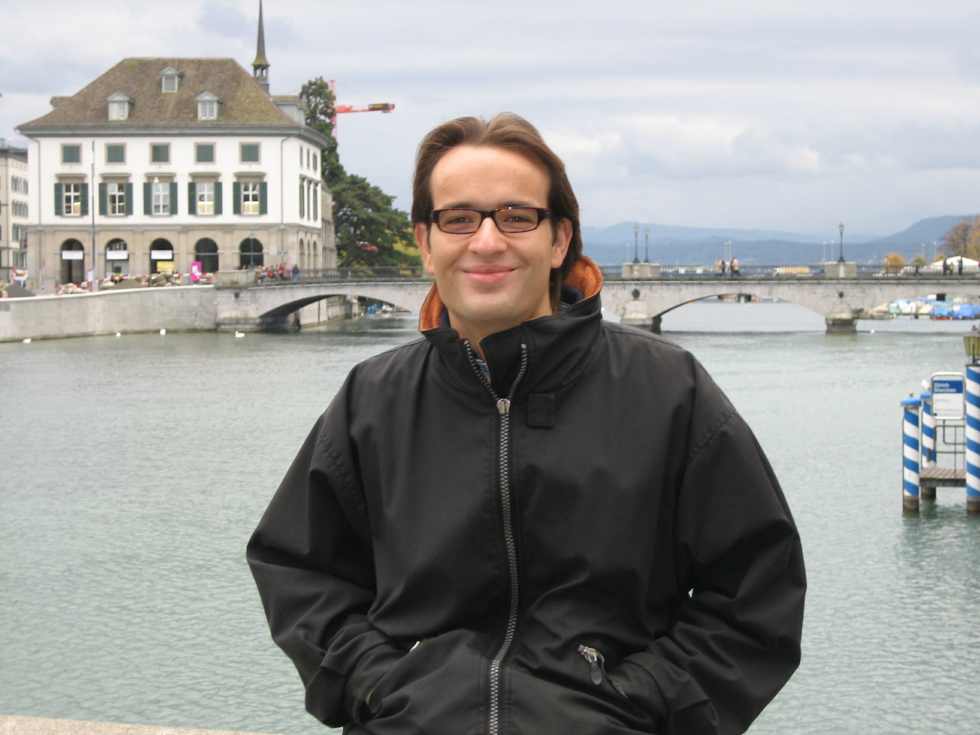
New modes of memorialization in fourth-century Rome
In the fourth century AD, emperors spent most of their reigns close to their armies in the frontier regions of the Roman Empire. Imperial visits to Rome became rare events. My project looks at the visual media employed by aristocrats in Rome to articulate their relationship to the absent emperors. It explores the ways in which the emergence of physical objects which were able to preserve the memory of imperial closeness created new relationships of solidarity and dependence in the ancient capital.
Modified November 15, 2010